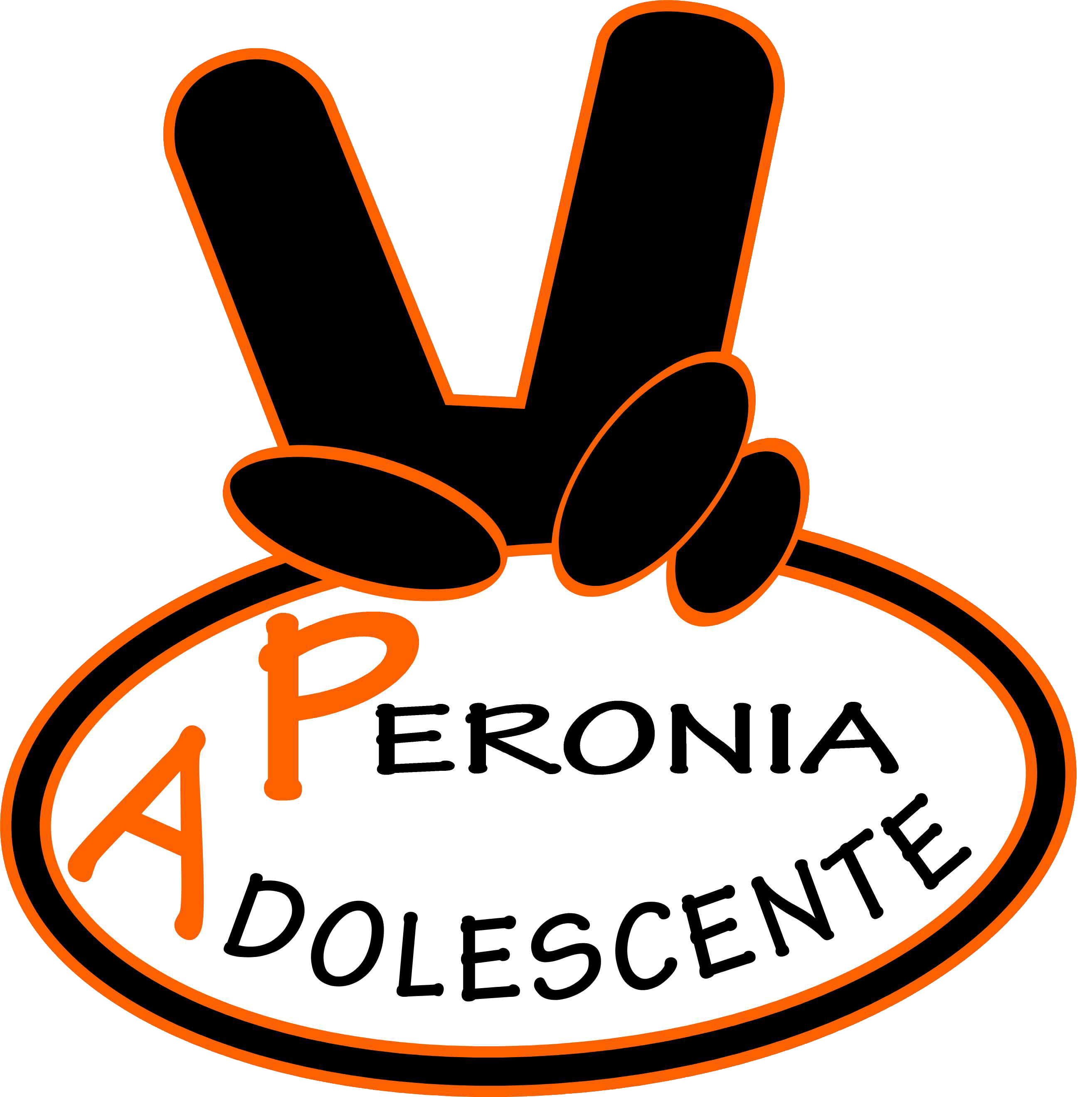Case Study: Peronia Adolescente
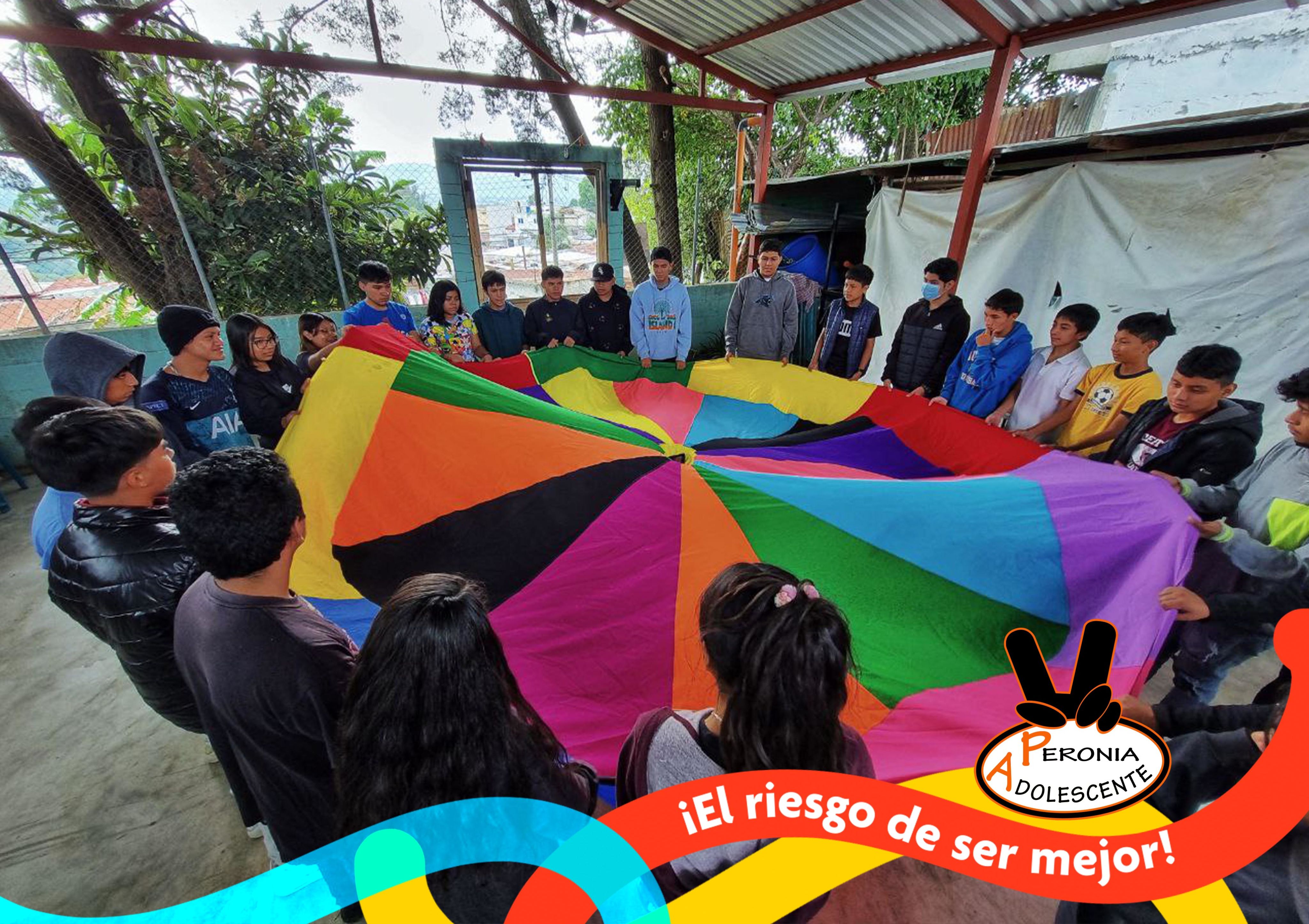
The adolescence of Peronia
It is 1996 in Villa Nueva. On ravines populated by forests, which do not slide down the steep slopes thanks to their deep roots, lies a plateau. It is as old as the forests surrounding it. However, there is a resident that has existed for about fifteen years on this plateau: a teenage city, Peronia. About ten years ago, the city began its urbanization with state-sponsored low-income housing projects. However, Peronia reaches its adolescence in a state of inequality, abandonment, and fear.
It is 1996, and the Peace Accords have been signed, bright symbols after a long history of bloody conflicts and military dictatorships. Peronia, however, lives with violence as if still overshadowed by the internal war. The issue is that Peronia experiences a phenomenon typical of unequal cities: urban violence. The violence of the city replaced the violence of the war.
In the nineties, gangs or maras were at their social peak in Peronia. Multiple gangs ruled the streets, competing for territories in the city as if they were disputed fiefs. Robberies, murders, extortions, and threats were common situations in the city.
"The issue of migration to urban areas on the outskirts of the city was being raised a lot, and that is where the concern begins. Within the framework of the Peace Agreements, these other forms of violence begin to emerge, and people begin to migrate to these areas. Then poverty arrives, many things arrive and those needs of the population arise: theft, gangs, which begin to occur very strongly."
The social terror they inflicted in Peronia still lingers in its urban memory. The street became a forbidden space for civil and community coexistence, co-opted as a trench of gang conflict. People opted for confinement and home as the last refuge, and the community disarmed itself out of fear. The main protagonists and victims of this violence were the youth.
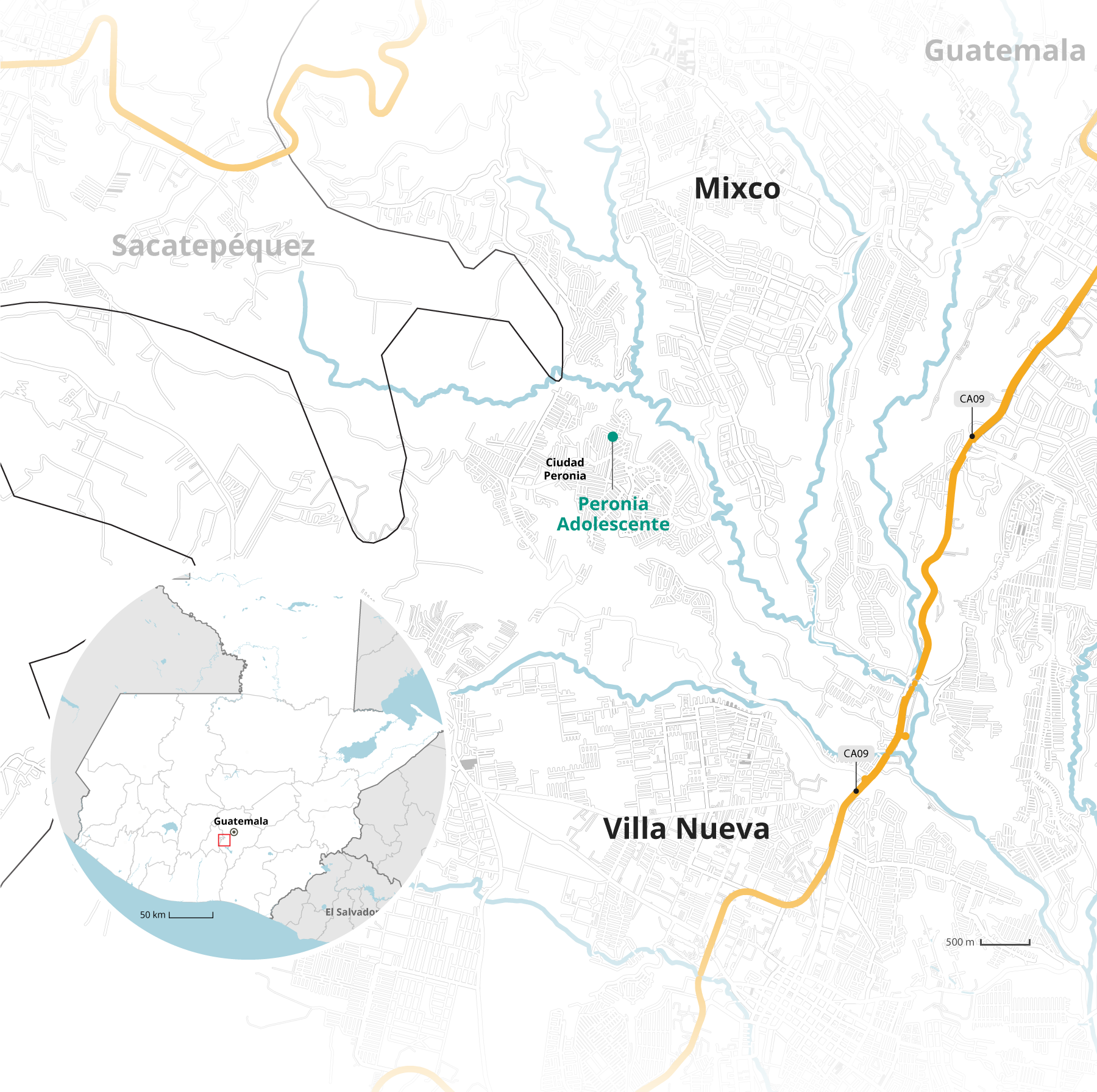
Young people forgotten by the state, with their own stories of family tragedy or economic poverty at a time in their lives when the search for identity is fundamental, are the protagonists of the gangs. A youth that finds in the maras the absence in their lives: belonging, community, meaning in a city that has little to offer.
However, the expression and language of the maras are destructive as they are the same as violence. The maras are the urban reflection of a youth at war/conflict with itself.
On the other hand, young people who reject the option of the maras are victims of its phenomenon. In a city where public space is co-opted, the community fractured, and precariousness is the norm of life, the youth lose the fundamental right to be adolescents.
Amid this panorama of a state that has done little or nothing to develop adequate conditions for a dignified life, rampant violence of the maras that fractured the urban life of young people confined to their homes and themselves, was a volunteer from SEFCA1 who came every week to Peronia to serve at the Catholic Church.
In 1998, she presented a project to the Peronia community that initially brought together a series of programs aimed at young people with the fundamental purpose of giving them the opportunity and space to live a right that is not taken for granted in unequal cities: to be young.
Thus, Peronia Adolescente was born.
The director of Peronia Adolescente, Marta Chicoj, about the organization's work, the importance of post-pandemic educational recovery through the initiative Recovering Education in Central America: Activating Networks and Associated Groups (RECARGA) and the experience with the case study guided by Population Council Guatemala.

A general history of Ciudad Peronia
Before delving into the history of Peronia Adolescente, it is necessary to know the history of the city that gave it its name: Peronia. A relatively young city whose origins date back approximately 40 years.
In the seventies, the territory of Peronia was a rural area with small villages surrounded by forests and mountains. Several private farms were distributed throughout the territory; one of them was the San José Buena Vista farm, then owned by the Ministry of Defense.
In 1976, the infamous earthquake tragically struck the entire country. One of its consequences was forcing the state to develop a provisional housing program, "Emergency Settlements," under the direction of the now-defunct National Housing Bank (BANVI). Temporary camps were set up in various parts of the country. Two of them were in the current territory of Peronia.
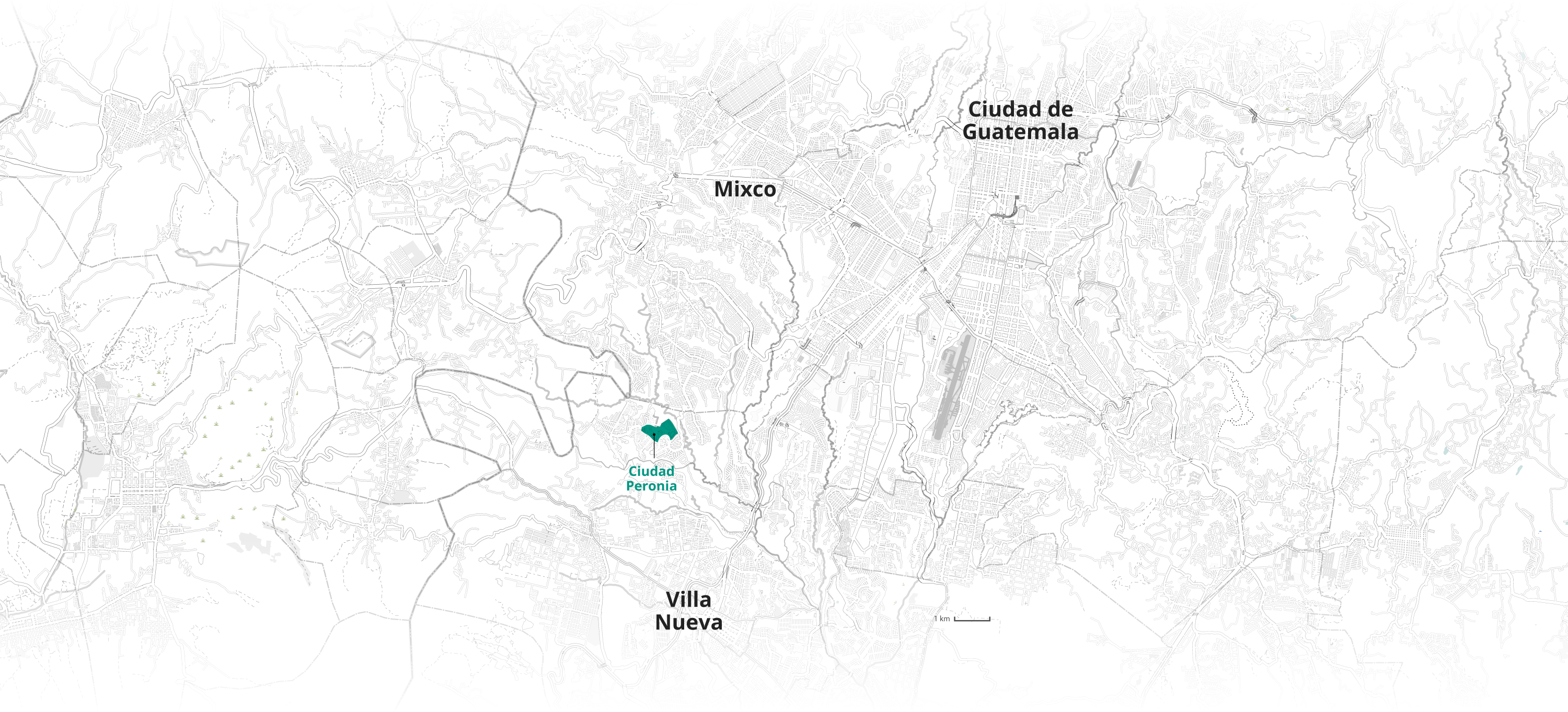
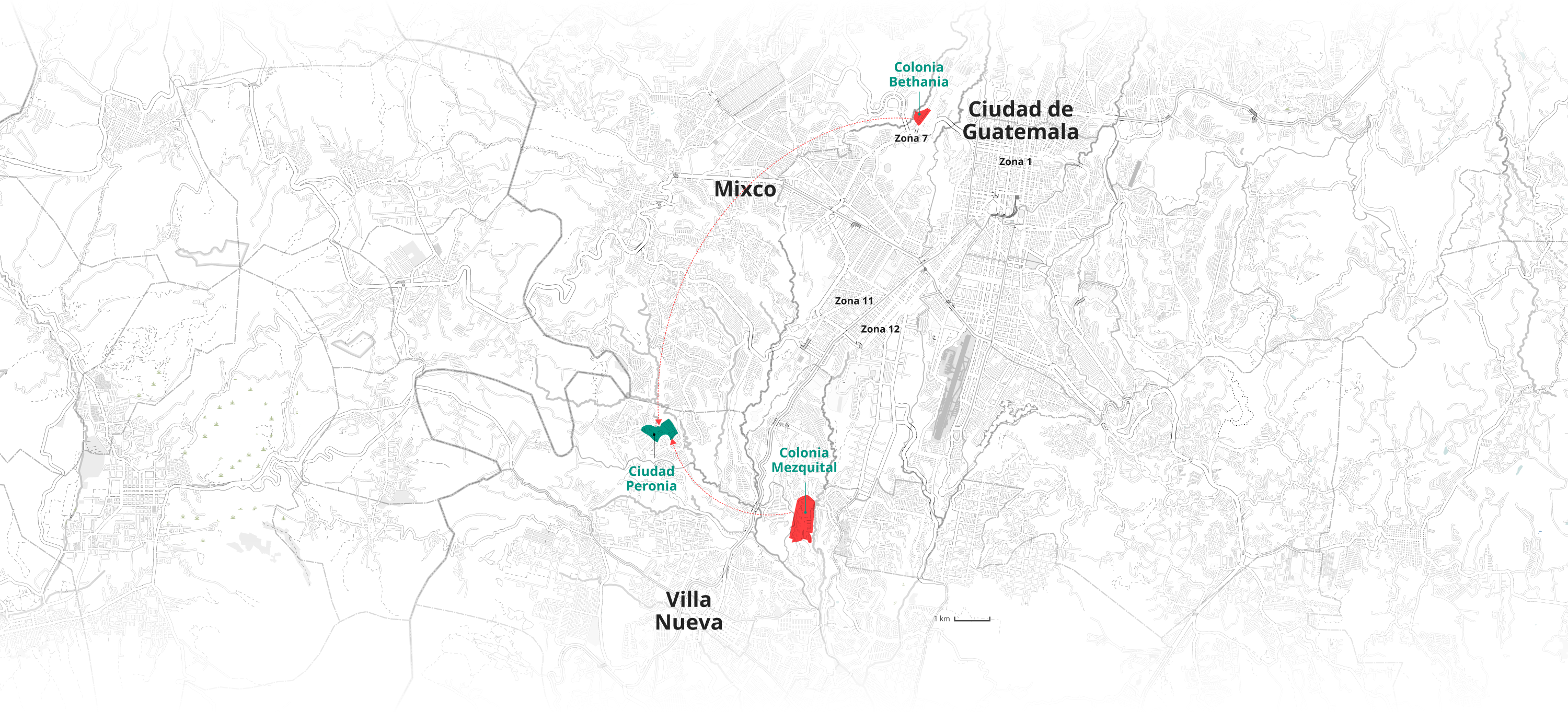

The first 750 families came from vacant lots in different neighborhoods of the capital city.
For example, the Bethania neighborhood in zone 7. Also from the El Mezquital neighborhood in zone 12. Later, the "Housing Fair" program during the Cerezo administration relocated families from the Roosevelt fields in zone 11. Other families came from the railway line in front of the National Theater in zone 1.
However, it was not until ten years later, during the government of Vinicio Cerezo, that a deliberate and planned urbanization process was launched. Regarding the allocated lands, some were already public property. Others belonged to engineer Fernando Aguilar, who sold them to BANVI.

Thus, Ciudad Peronia was founded: originally conceived as a residential-housing project.
Throughout the last decade of the 20th century and the beginning of the 21st century, the urban density of Ciudad Peronia increased. New migrations extended urbanization. These migrants came from the urban peripheries of Guatemala City, the interior of the country, and returnees from the United States. The new population brought problems for the sense of community and the composition of the city.
Firstly, unlike the first inhabitants who saw the city born in the eighties, the second migration did not belong to state programs or a territorial planning scheme. The planned urban process by the state of the eighties was abandoned. In Guatemala, the state has historically neglected urban peripheries, referred to as asentamientos, due to lack of capacity or historical negligence.
Peronia was considered within this category from the beginning. Hence, planned urbanization was not sustained as it was neither a priority nor an interest of the state. Proof of this is its relationship with the municipality of Villa Nueva.
Initially, it was unclear whether the municipality of Villa Nueva or Mixco should be responsible for Peronia, despite the area always belonging to Villa Nueva. It was not until 1998 when Mayor Antonio de la Cruz of Villa Nueva granted permission for the construction of a new bridge because one had collapsed due to the ravages of Hurricane Mitch.
Therefore, without the direction or agreement of a state urban plan, with the need and enthusiasm for land, the migrants of the nineties occupied vacant and forested lands without official property titles.
Secondly, these new inhabitants were considered "invaders" by the first settlers, the families settled at the beginning of the urbanization of Peronia in the eighties. In unequal cities, the concept of invasion is uttered with contempt and prejudice. It is a stigma more than an official category.
This caused, thirdly, inequality and differences between groups. Conceptually, the invader carries the social stigma of being alien to the legally occupied territory, the unwanted of the real estate market, the foreigner who takes over land that does not belong to them by title or conquest.
On the other hand, since its inception, Peronia has been labeled as a dangerous area or "red zone." Red zones are urban spaces dominated by crime, especially associated with gang activity and drug dealing.
Currently, Peronia borders San Miguel Petapa, Mixco, Amatitlán, and Guatemala City. It is located in zone 8 of Villa Nueva. According to the last census by INE in 2014, Peronia houses 37,000 inhabitants; while according to the then-deputy mayor Sergio Trujillo mentioned in a 2017 Plaza Pública report, the figure was 70,000.
Insecurity is a concept with varying definitions. In the case of red zones, they carry social stigmas. The implications range from negative perception in the real estate market to the sense of urban identity of the resident communities.
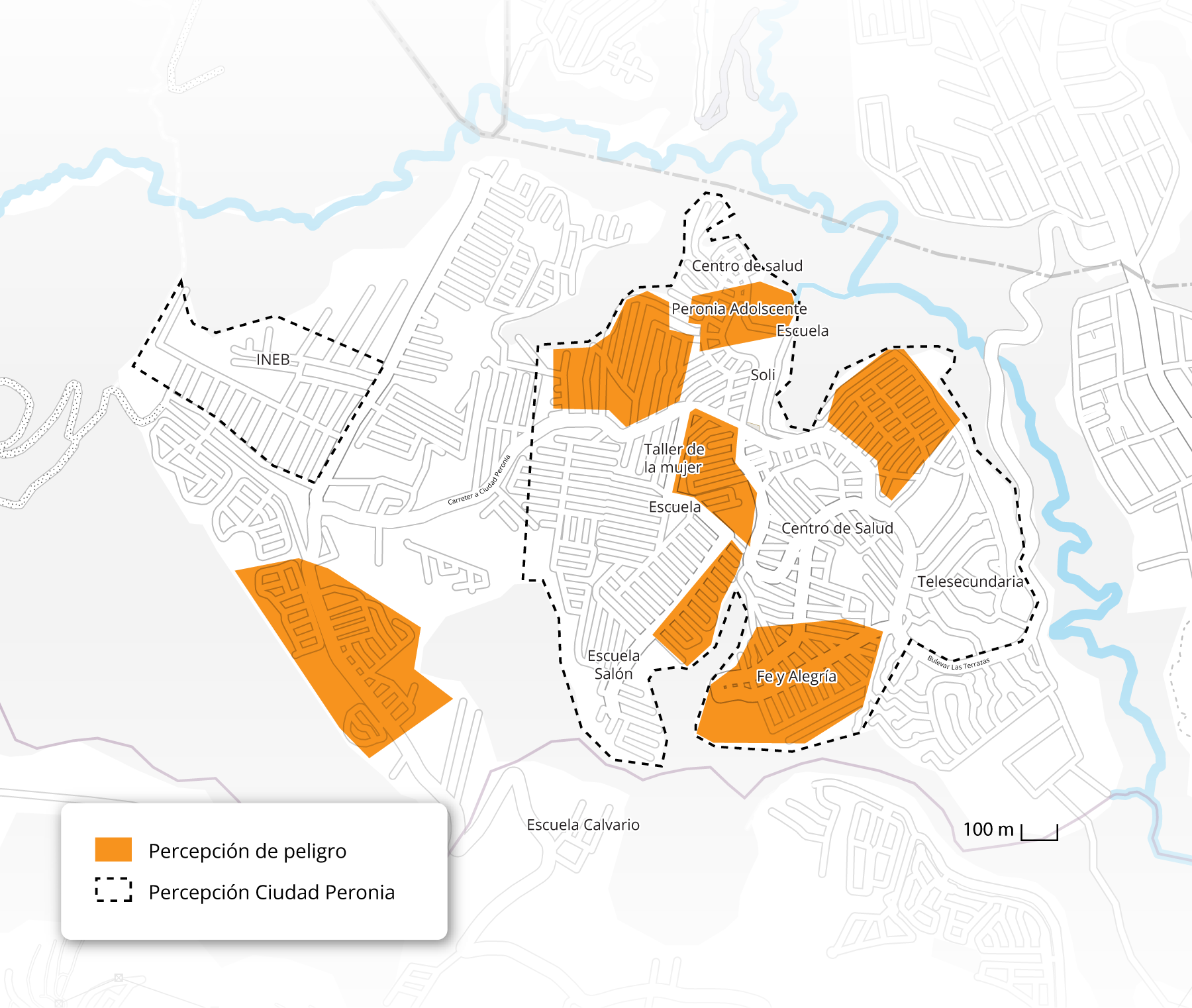
Map prepared from an exercise worked with the Peronia Adolescente team. The recorded points represent the perception of Ciudad Peronia's territory and danger.
Map prepared from an exercise worked with the Peronia Adolescente team. The recorded points represent the perception of Ciudad Peronia's territory and danger.
However, it cannot be denied that violence occurs in red zones. According to statistical reports from the Technical Secretariat of the National Security Council, crimes refer to homicides, property robberies, sexual crime reports, kidnappings, and domestic violence. Among these crimes, homicides and injuries in violent incidents account for a bit more than 50% of the crimes.
Although Villa Nueva has experienced a significant drop in homicides and injuries from violent incidents since 2016, they still exceed hundreds. Urban violence remains a constant as Villa Nueva is one of the four municipalities with the most homicides in the departmental area of Guatemala.
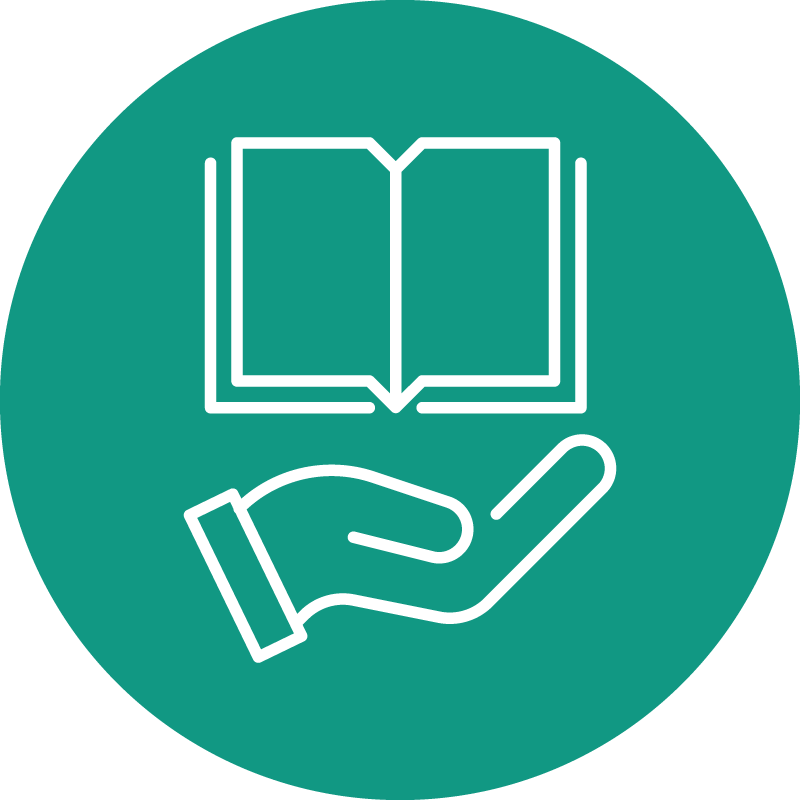
The childhood of Peronia Adolescente
In all, faced with this context of an unequal city, urban violence, and a fractured community, Peronia Adolescente has closely worked with the youth to reverse the dynamics of violence in Peronia through art, personalized education, and community organization.
Peronia Adolescente is, essentially, an organization that was born from the community, especially youth.
This is their story2.
Organizing the youth
Initially, the founder of Peronia Adolescente envisioned the organization as a platform, a space where youth could converge in coexistence, train as educators and leaders of their community. Therefore, with financial help from SEFCA, they resolved to launch an initial series of programs and hire a team of educators.
Peronia Adolescente conducted training with women, entrepreneurship in natural products, and especially a platform for youth training from 1998 to 2004. In the latter, they started the "Distance Program" that provided financial support to young people to pursue studies at IGER3, which also donated books for their classes with the requirement of volunteering. They also held camps to cultivate spaces for youth coexistence and expression, lacking in a context where the street was conquered by the maras.
"I remember that girl started getting involved with the Catholic Church, they held meetings and camps and filled 2 buses, my mom would take my brother to paint the logo. The buses were full; I wanted to go; it looked nice. Rock was very strong, they went with their T-shirts, long hair, people carried their guitars, Ricardo Andrade and all that. When my brother came back, he was happy, 'I'm happy because I helped, now I'm from Peronia Adolescente, look at my badge,' he said.
Youth programs intentionally recruited young people at risk of violence, overage, and child labor. It was the most vulnerable population to urban violence and economic precariousness, for whom a place of meeting and community coexistence was foreign in Peronia. It was also the population that maras recruited.
There was a moment of tension between Peronia Adolescente and the maras. On one hand, the gangs felt threatened in their recruitment of new members. On the other hand, the attendance of gang members to spaces organized by Peronia Adolescente implied the risk of gathering young people from rival gangs, with the danger of violent situations exploding and endangering other youths. So after negotiations with the gangs, they recognized the work of the organization.
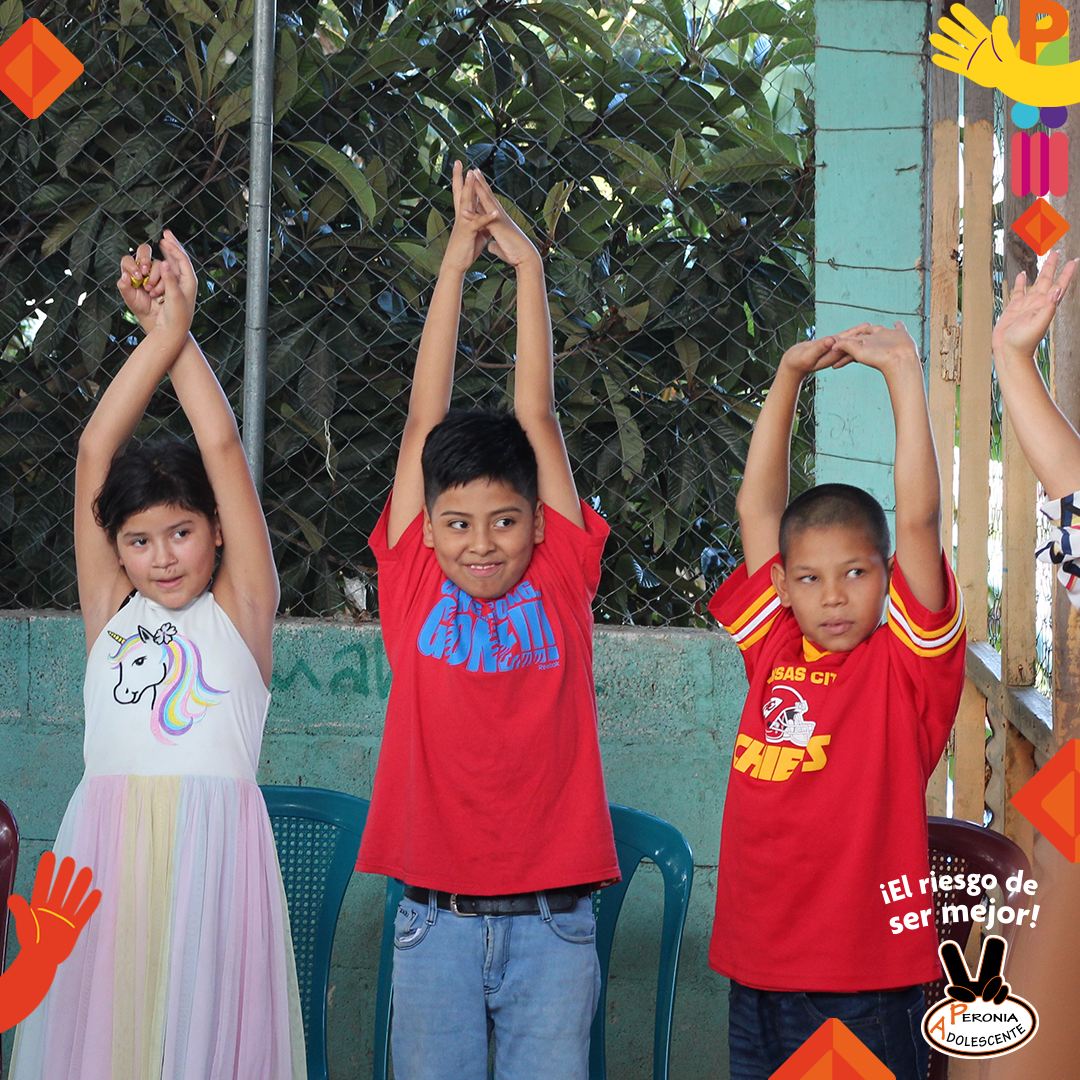
El relevo generacional
After years of work and programs, in 2002, the founder planned her departure. At that time, she was in her thirties. Her original idea was not to settle as the lifelong director of the organization. She harbored the desire to train young people from Peronia to take responsibility and hand over the reins. Thus began the formative program called the staggered process.
Initially, a group of educators called on young people in various parts of Peronia: educational centers, streets, churches. The young people who attended were called volunteers. The purpose of the process was to train young people in leadership through workshops and camps. However, the training was step-by-step in phases: a staggered process.
Those meetings and camps that brought together young people from Peronia stripped of identity and opportunities saw the birth of leaders who wanted to transform their reality and that of others. Organizing the youth through coexistence and education so they could actively and directly participate in the transformation of Peronia was the idea.
"We were 150 kids, boys, and girls there, with all the camps and everything. Yes, it lasted quite a bit. The project was a success, but at some point, it was said that the founder already had the idea of leaving and seeing if we, as young people, were willing to continue the project."
After six years of initial work with young people in Peronia, on July 14, 2004, a group of ten people, three adult women, and seven youth leaders signed the constitutive act of Peronia Adolescente as a civil association. Only three of them remain working in the organization. One of them is the current director, trained in Peronia Adolescente.
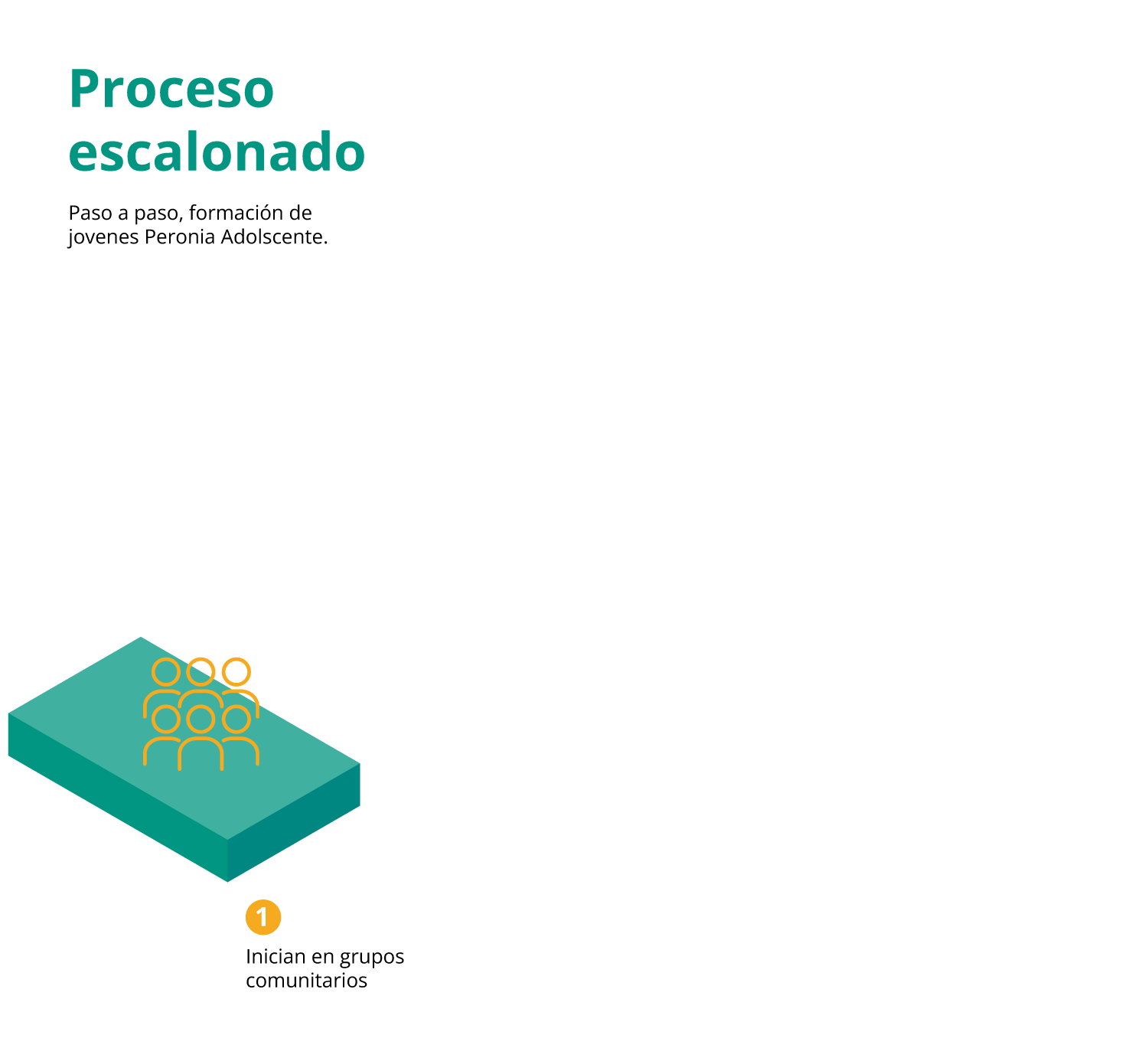
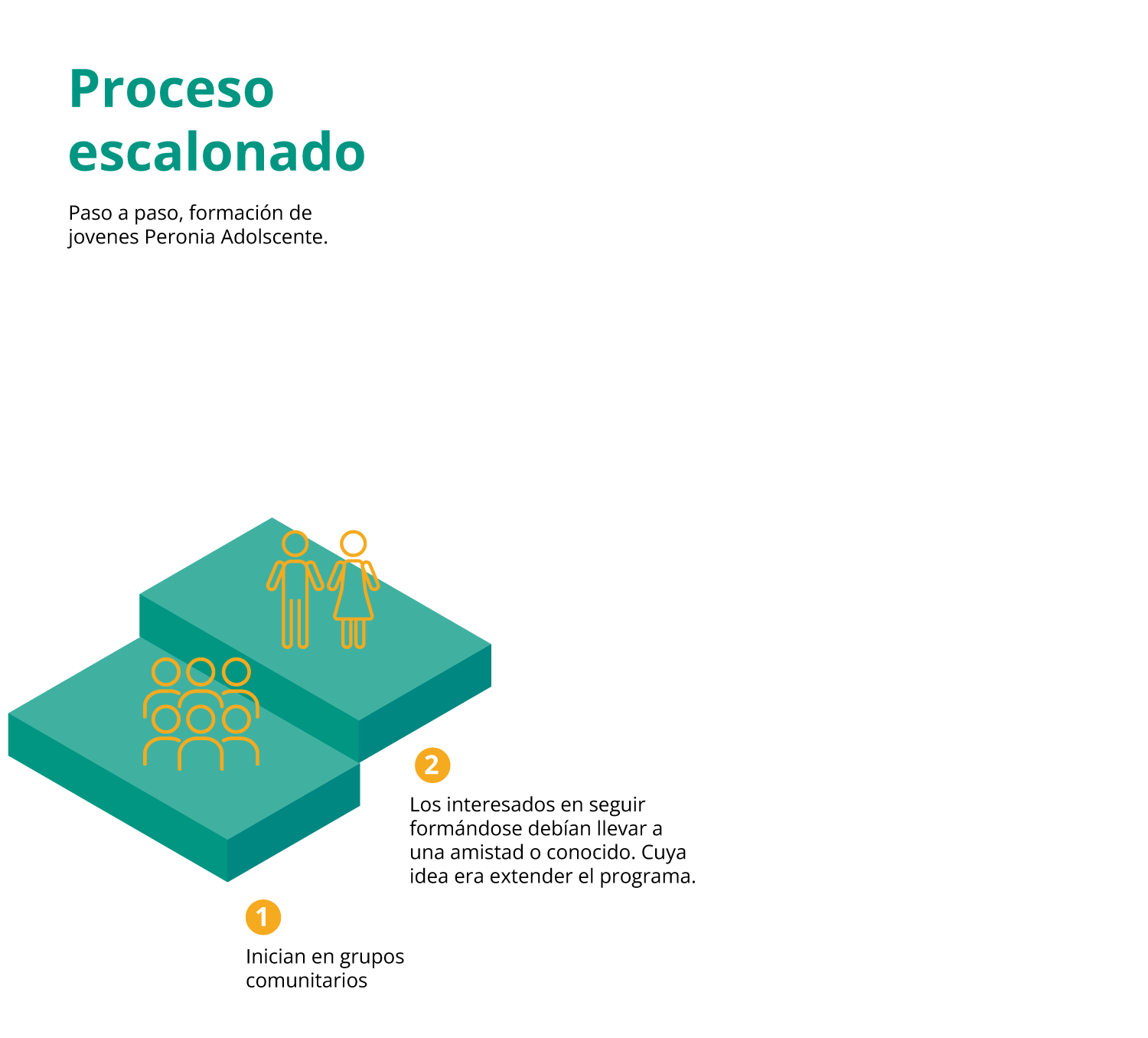
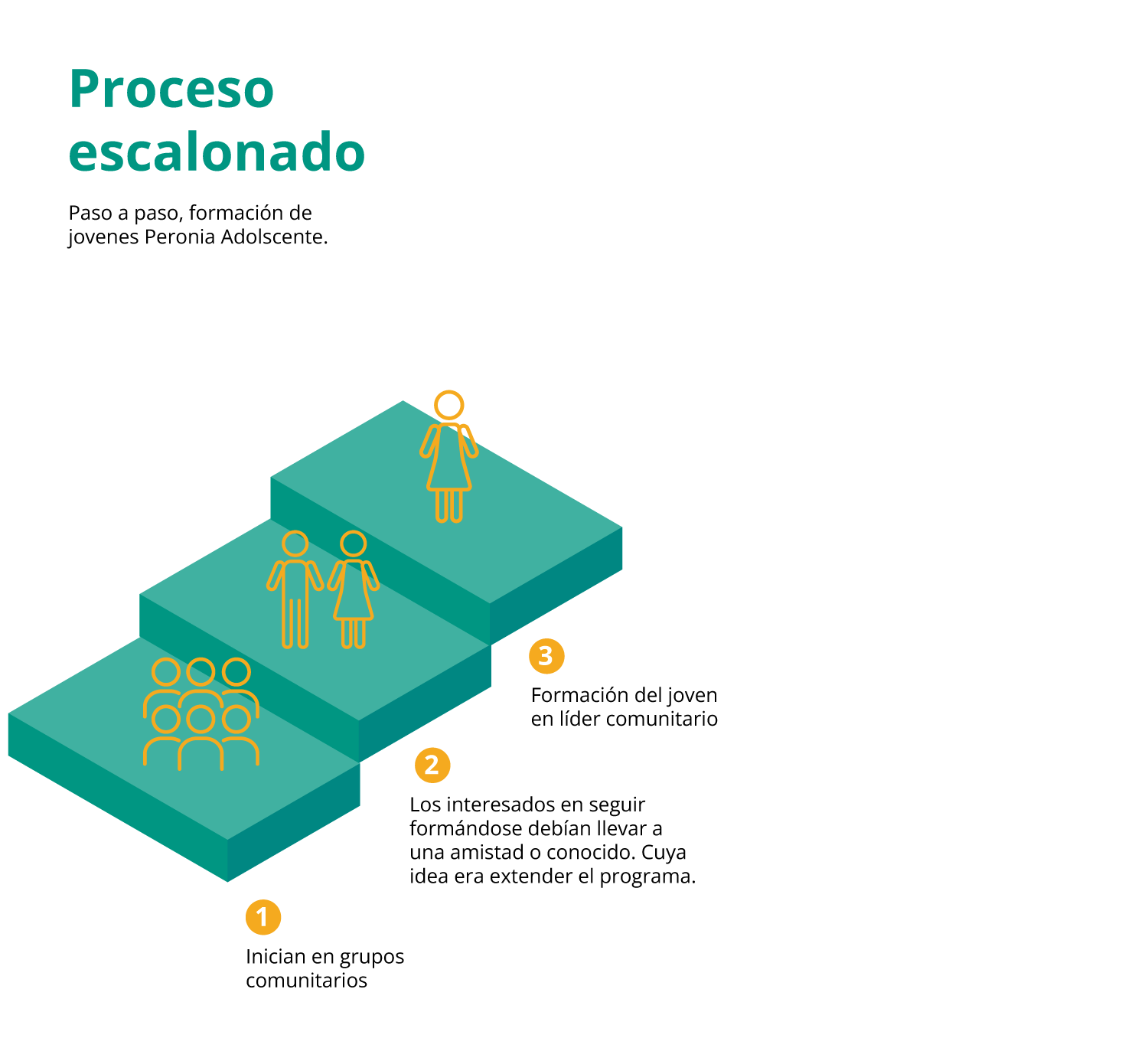
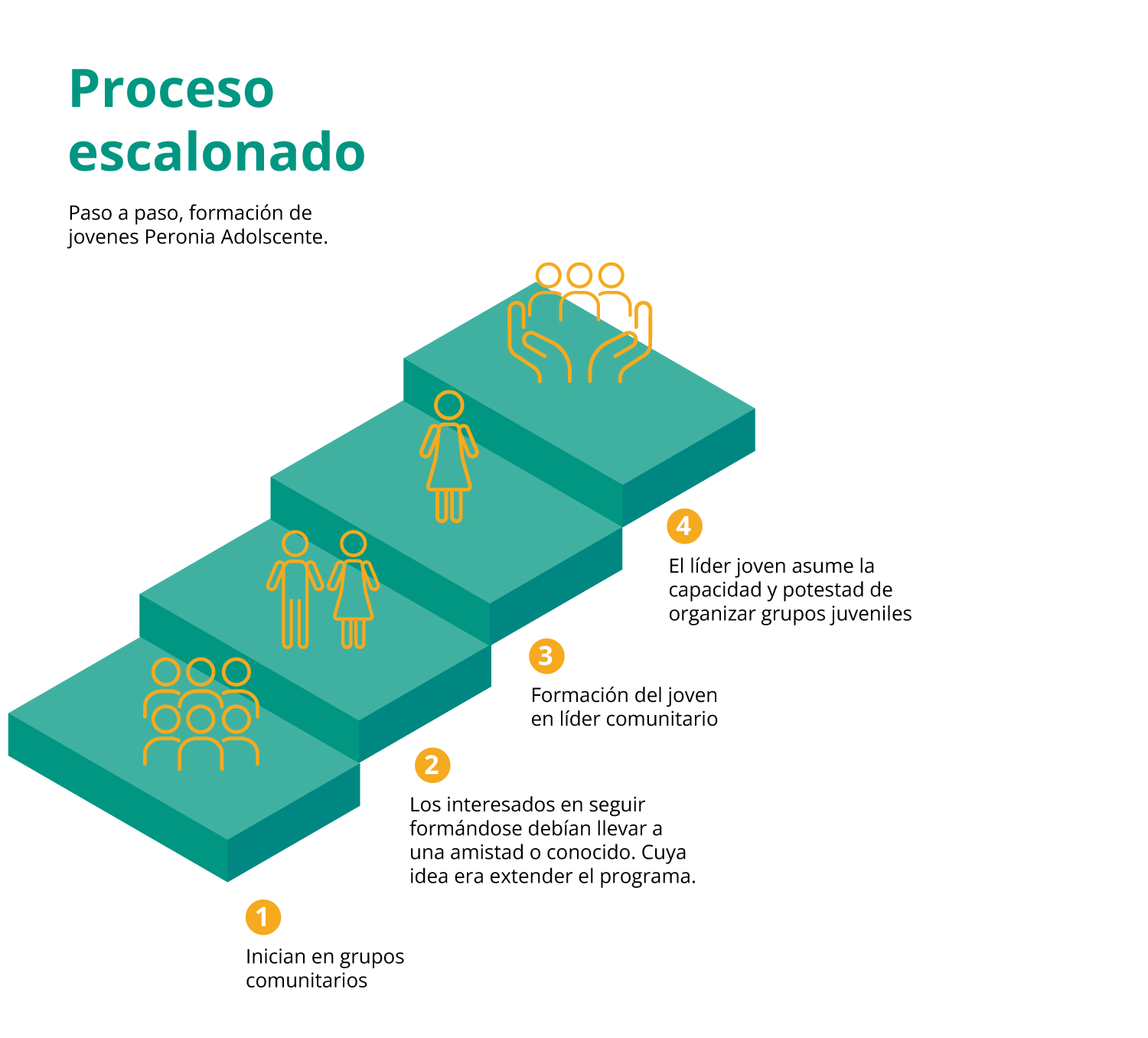
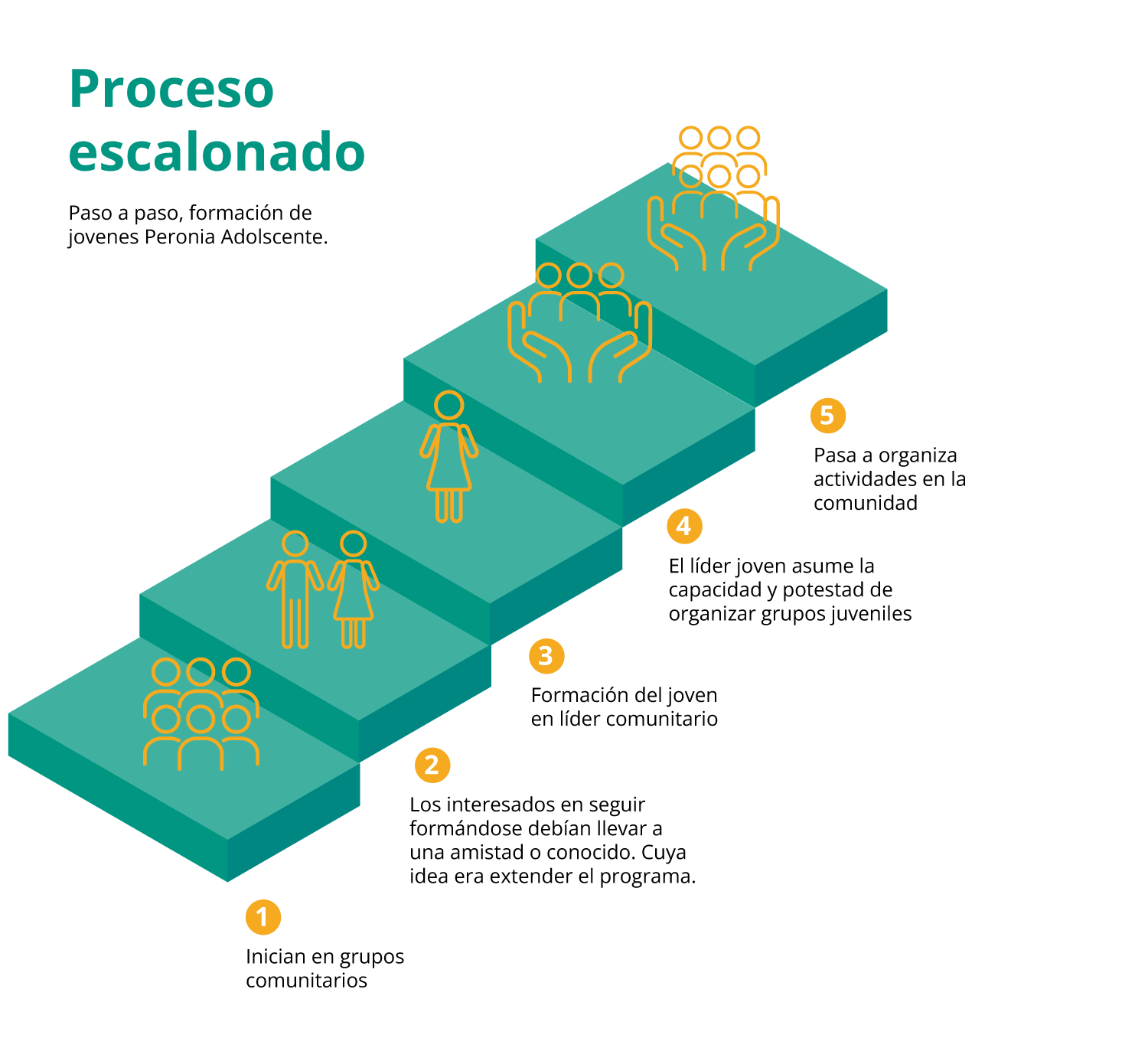
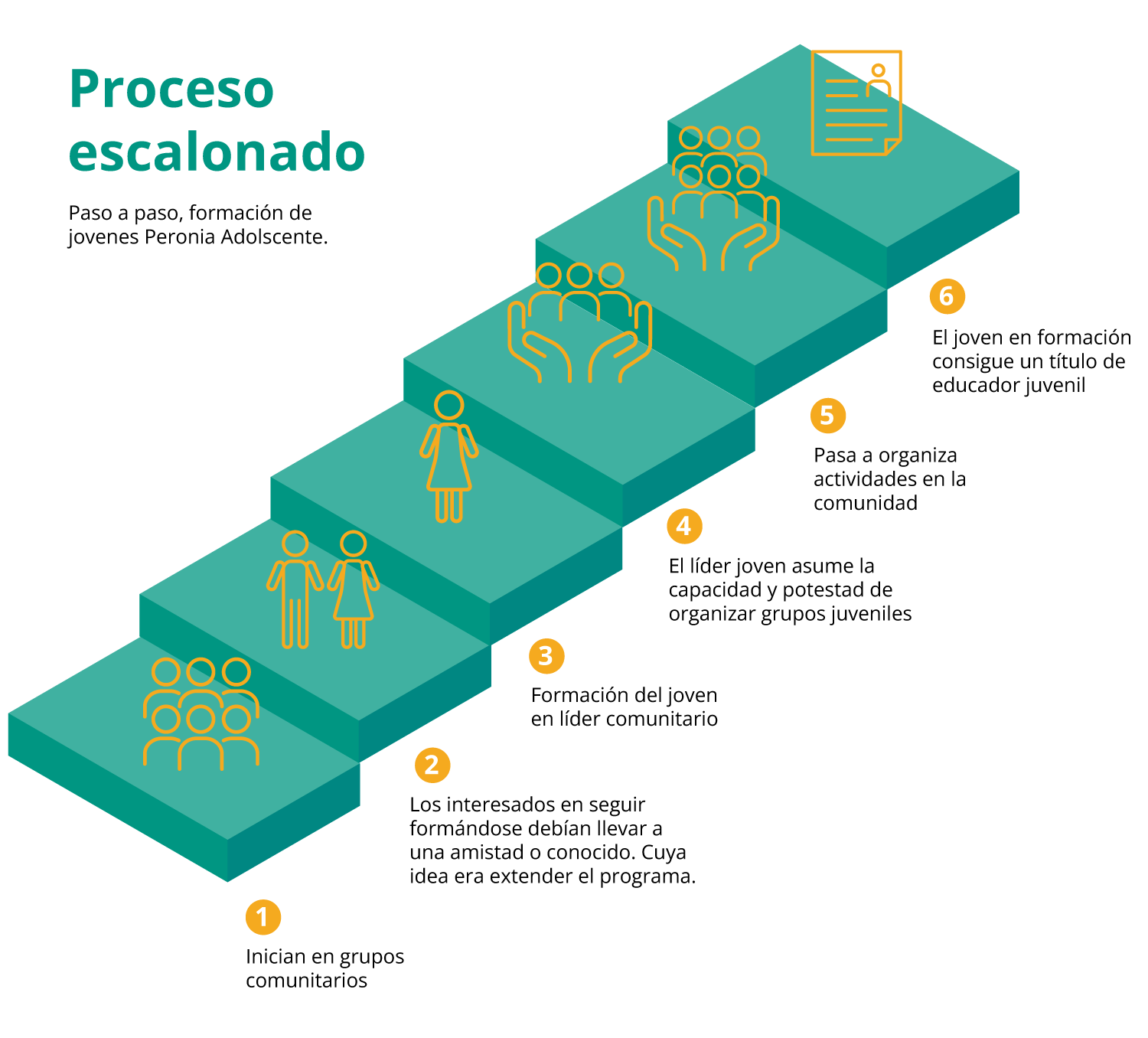
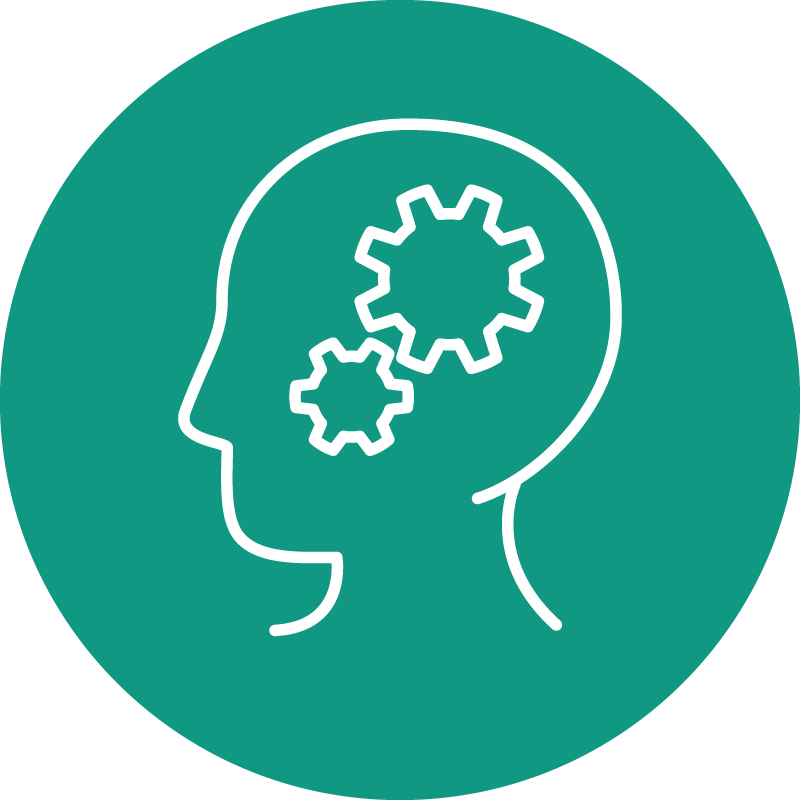
Adolescence, beginning to learn
The director, her brother, and sister took over Peronia Adolescente. It was not easy to take the reins of a newly accredited civil association as inexperienced youths. They faced overwhelming responsibilities such as tax obligations, public service coverage, and space rental.
In the planning of the handover, it was considered that those who took over the mandate should be self-sustaining. Therefore, the new group inherited an area where an office and project equipment were located. However,
they lost the space due to issues with SEFCA.
The area had been built with resources and work from Peronia Adolescente, but the property was not legally in their name. They rented the place and paid a monthly fee from their own resources. The director recalls that they began a process to acquire the land legally. The space had been a nuclear place for the organization since its foundation, where an important part of Peronia Adolescente was built.
"We requested a meeting with the board, so that they would authorize us to make the donation in the name of Peronia Adolescente; we kept working. They prolonged it, until one day they called me. “Look, just to tell you that the house has already been sold.” Horrible... I was alone, at that moment I felt the worst of the worst. When we needed that space..."
A horrible situation occurred. The true owners of the land, after delaying Peronia Adolescente's request, suddenly informed the director that the space had been sold. The director remembers feeling a cold paralysis. It was like losing a home.
In a city where the legal certainty of land has been a matter of tensions and struggles to the point where social differences are reflected in the stigma of the invader, the search for a new place was long for Peronia Adolescente.
They wandered through rented sites over the years. They had problems with prejudices from neighbors who considered their work negative just because they dealt with young people. If they weren't "invaders," they were "gang members." It wasn't until 2019 that they finally managed to move to their current place: a space in the name of Peronia Adolescente. A place of their own.
On the other hand, the handover planning also bequeathed the new group the ecological bicycles project. Called Ecobici, the project came to light in 2002. It was coordinated with SOSEP. It involved bringing containers full of used or broken bicycles from the United States. The project's idea was to provide work for young people, promote the use of bicycles, and internally give self-sustainability to Peronia Adolescente.
However, like the lost space, the Ecobici project took an unfortunate turn. The director recalls that in 2005, suspicions of customs fraud in the government arose. Thus, the importation of donation containers was banned. This severely affected the project as importing bicycles from the United States was fundamental.
Another incident was that the director delegated Ecobici to the group of young mechanics. New projects with European funding entered Peronia Adolescente's orbit, which occupied the director's attention and time. Unfortunately, despite the trust, they soon discovered that the boys were stealing the bicycles and equipment from other projects. Both incidents ended any effort to continue the project.
Overall, the period from 2004 to 2008 was challenging. The inexperience of a young group sustaining themselves and Peronia Adolescente as best they could against the reality of bureaucracy, corruption, and the search for space. It was as if Ciudad Peronia resisted its youth and their transformation begrudgingly.
Overcoming the difficulties would not be easy. However, from 2008, with experience gained for better or worse and a commitment to a better city, Peronia Adolescente entered a growth phase that consolidated it as a fundamental organization for Peronia.
Peronia Adolescente matured.
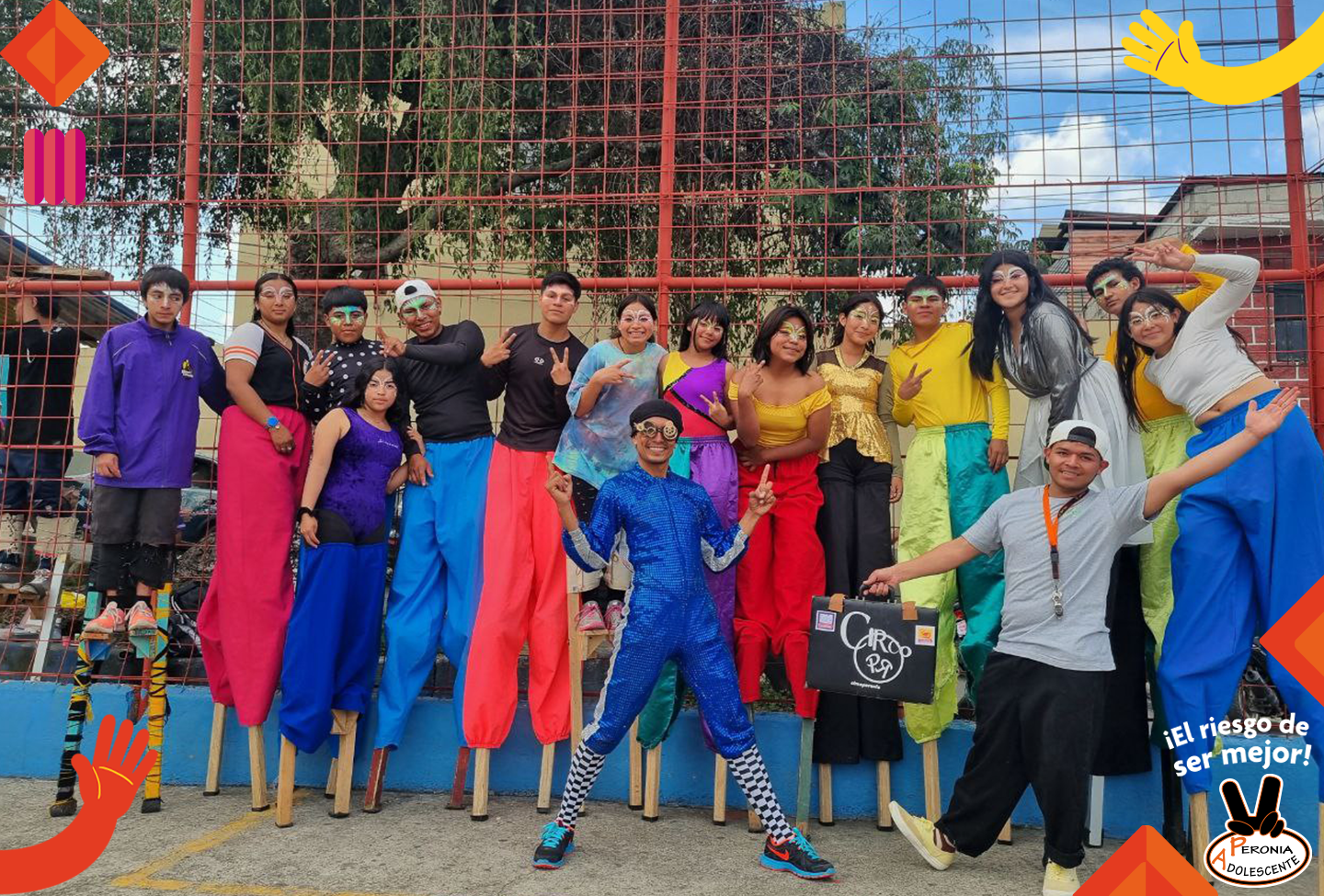
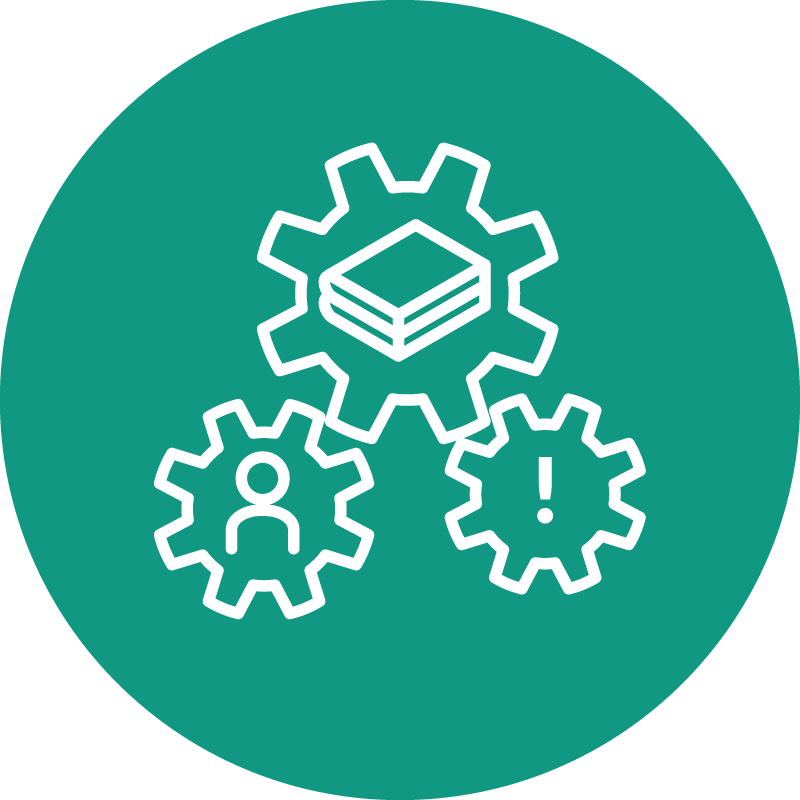
Education, art, and community: The pedagogy of Peronia Adolescente
In 2004, when the handover of Peronia Adolescente took place, SEFCA also stopped providing funding. This did not interrupt the projects inherited by the director. Nor did it mean they were stalled in seeking new partners.
Alliances and new projects flourished, but it was in 2008 when they found one of their most important allies, with whom they maintained a fruitful relationship for over ten years: the Dutch organization Kinderpostzegels. Thanks to effective training and gradual funding from Kinderpostzegels, Peronia Adolescente strengthened institutionally and realized new projects.
The association with Kinderpostzegels allowed Peronia Adolescente to develop a strategic plan in 2016. Then, they consolidated a particular pedagogy and a protection policy for the young people of Peronia Adolescente.
Personalized tutoring
In 2014, Peronia Adolescente partnered with the Strachan Foundation, whose vital alliance lasted until 2022. Thanks to their funding, they resumed the scholarship program. Thus, those with fewer resources are awarded scholarships after a selection process, who will continue studying from basic to graduating from diversified.
However, the director remembers that at that time they perceived that the program was falling short, that they needed to accompany it with other methods. For this reason, they propose a new program to the foundation.
One of the strategies we identified was the topic of tutoring. Tutoring is basically strengthening subjects like math and language in general. Then we realized we needed to do more personalized tutoring. So we sat directly with the young people to write and read.
Personalized tutoring is another emblematic methodology of Peronia Adolescente. They are guided by educators from the organization but have also employed peer tutoring. In these, young people from Peronia Adolescente, either from the same educational level or different educational institutions, help in the education of the tutees.
Additionally, the tutoring provides psychological support. Initially, it was limited to general self-esteem issues, but it was strengthened due to the COVID-19 pandemic.
The youth in the tutoring programs have changed. Unlike the direct recruitment of young people at risk and with limited resources, Peronia Adolescente started recruiting other profiles, especially students from public schools seeking learning that the public system lacks or offers very little of.
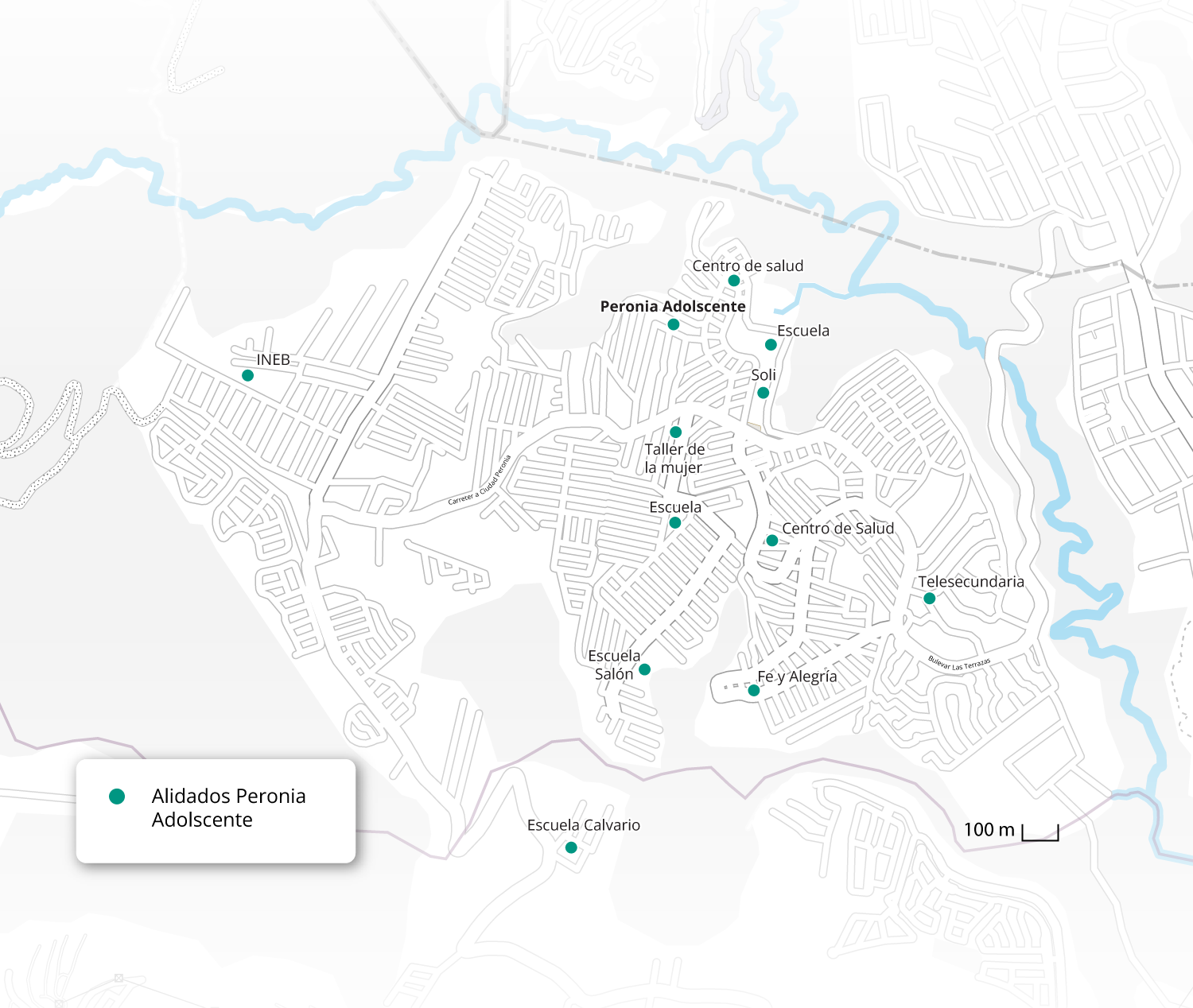
This is a map created from an exercise worked with the Peronia Adolescente team. The registered points represent the public schools and private educational establishments from which they receive tutored students.
This is a map created from an exercise worked with the Peronia Adolescente team. The registered points represent the public schools and private educational establishments from which they receive tutored students.
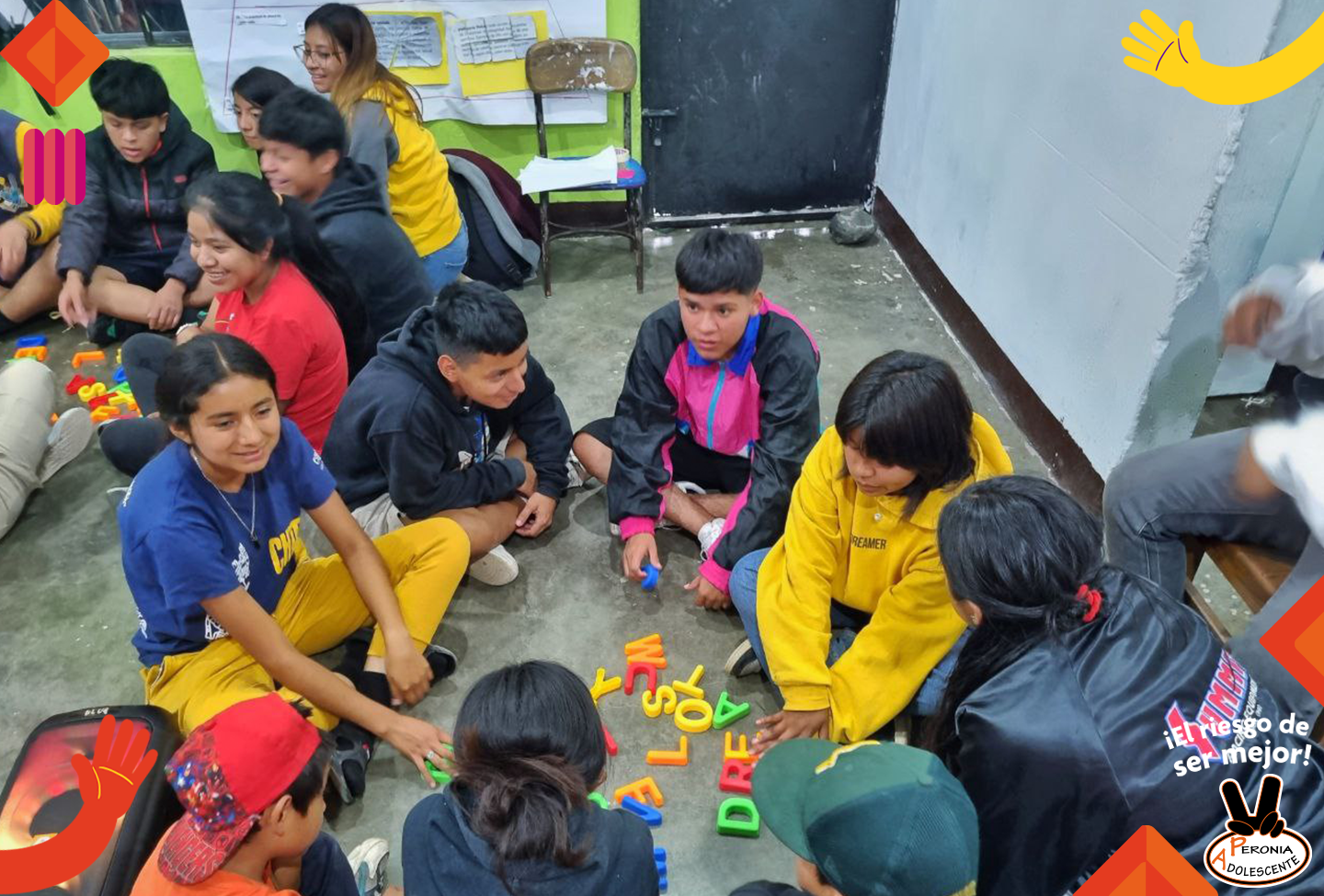
Being an adolescent through art
The director and her colleagues were characterized by their playful methodology. Educating is learning through play, artistic expression, and community organization. This influence came from the training they received in Peronia Adolescente: the camps and coexistence of the staggered process, the impact on public space through art.
The playful methodology distinguished Peronia Adolescente from other organizations. So much so that it opened alliances in the public education sector. Since 2010, public school teachers have received training in playful methods from Peronia Adolescente.
On the other hand, the playful methodology is also artistic, which has been constitutive of Peronia Adolescente. Since 1998, they have developed cultural events called the Civic-Cultural Festival of Peronia Adolescente. More than 23 festivals have brought together the community and celebrated youth.
The organization also, in their diploma in youth training, train the youth in leadership issues. In it, young people are trained in leadership topics. These young people are responsible for managing and coordinating different projects such as the festivals, with support from the Peronia Adolescente team on issues like municipal permits and invitations to public schools, among others.
In summary, youthful expression and the reappropriation of public space are artistic. The cultural festivals are spaces reclaimed from the violent street where the young person finds a place and identity through expression. Thus, being an adolescent through art.
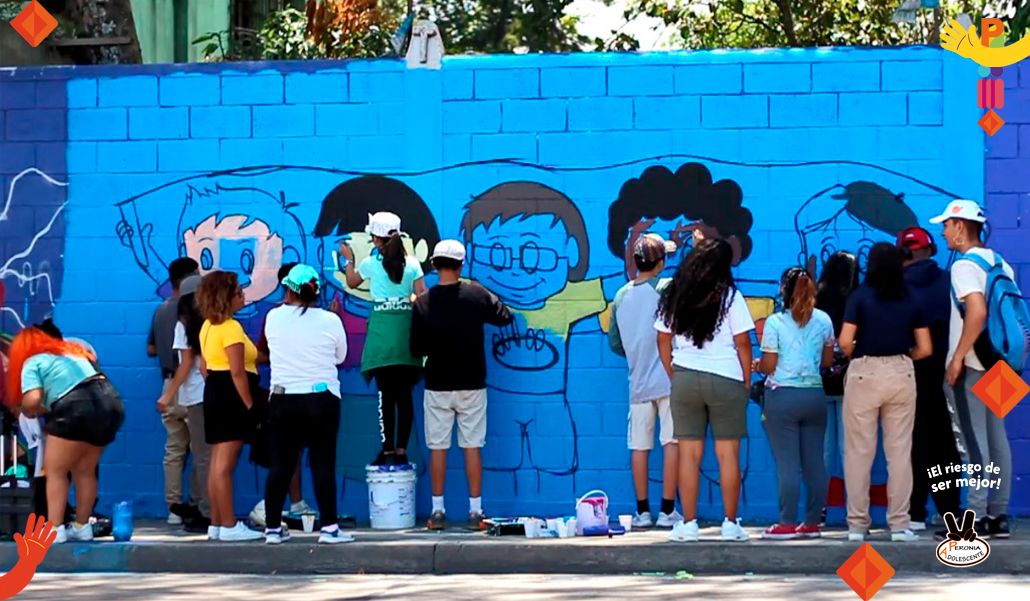
Integral adolescence
Since 2008, Peronia Adolescente has launched numerous projects with the vision of the young person as a multidimensional being: from economic to identity aspects.
It is about seeing the adolescent as an integral subject, whose vision gains more value in an urban context like Peronia that strips youth of their most basic rights.
We have reiterated throughout history a fundamental principle of Peronia Adolescente: making adolescents live their adolescence. In other places, this would be obvious, a taken-for-granted truth. However, as the director mentioned when recalling her teenage years at the beginning of the organization:
I stopped studying at 12 years old, stopped studying, and dedicated myself to working. But when Peronia Adolescente arrived, I loved it because it was an area where I felt like an adolescent because I never lived my adolescence.
In unequal cities, not even life is guaranteed, much less youth. Hence, organizations like Peronia Adolescente fight to reclaim and guarantee conditions where adolescence is a reality and not a fortunate miracle. And in Peronia Adolescente, the young person is multidimensional.
In all, the integral pedagogy of Peronia Adolescente, where education, art, and community are relevant, directly aligns with the vision of integral adolescence.
In this sense, the work of educating through tutoring young people parallels opening spaces and artistic and playful experiences while organizing and training them as young leaders to project them to their community and the city.
If violence, precariousness, and inequality in Peronia have taken everything away, Peronia Adolescente does everything possible to recover the adolescence of a city that has never lived it.
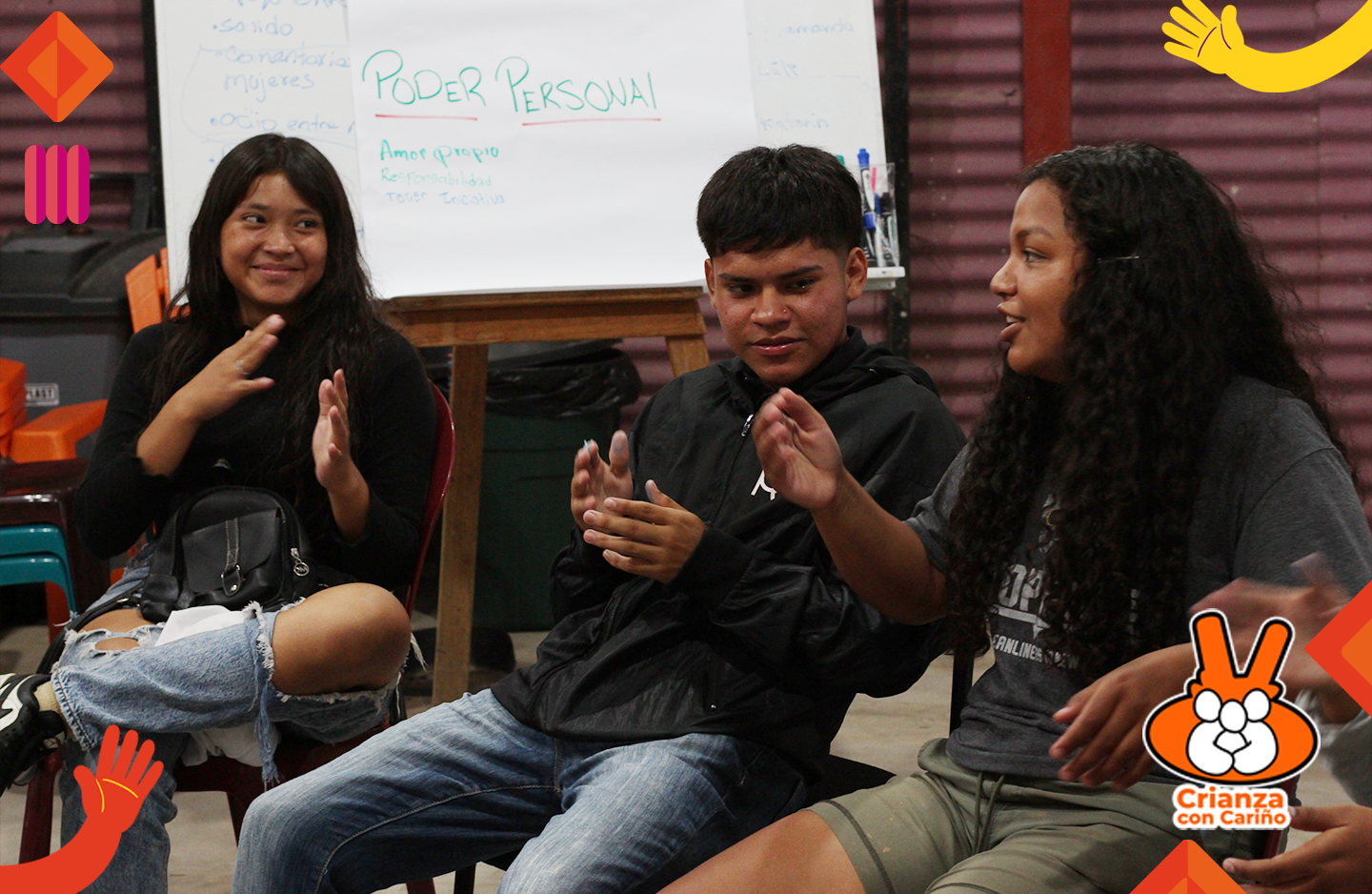
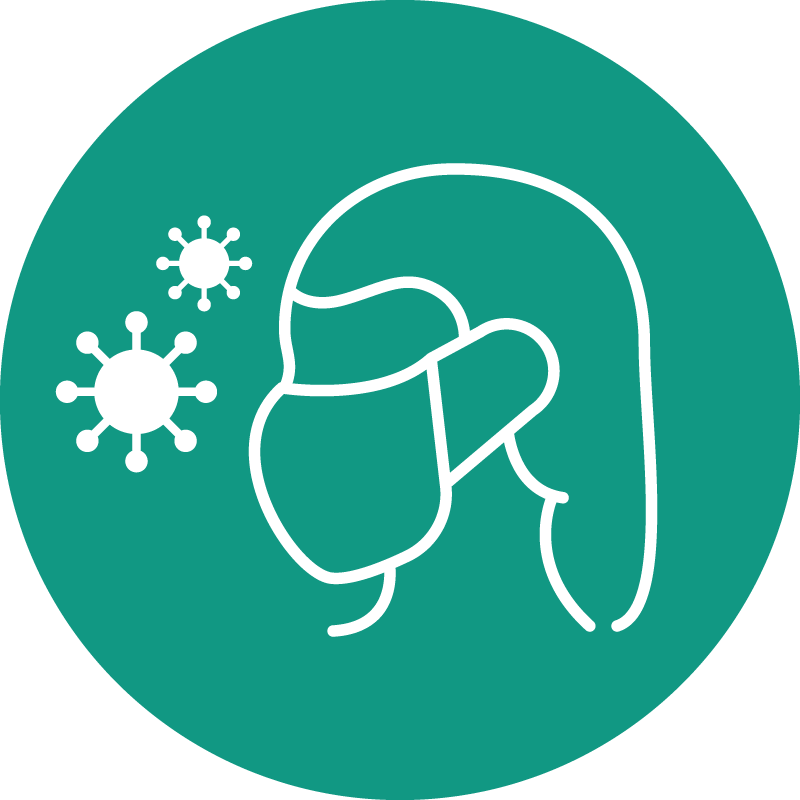
Peronia Adolescente in pandemic times
Peronia Adolescente enters the new decade of this century with numerous projects, a defined pedagogy, and a general plan. Youth training with its distinctive staggered process, public space influence through art, cultural and social programs, and personalized tutoring are the fruits of a long history of learned experiences, forged alliances, and passionate commitments.
However, the new decade has brought difficult challenges. It might be precise to say that beyond challenges, they faced severe adversities unpredictable in any calculation and consideration by Peronia Adolescente.
The municipal presence
The times of violence where maras freely reigned the streets of Peronia are long gone. Gang groups still exist in Peronia, but they do not have the public presence of the nineties or early this century. The prominence of urban violence is now in the same public institutions.
The municipality of Villa Nueva has been representative of state policy towards settlements and urban peripheries: neglect and abandonment. Justifying it by the legal uncertainty of land in the settlements, they have left populations to their fate who build societies on urban margins. The same populations are forced to seek home and place elsewhere due to the need that the same state has manufactured or neglected in large cities.
Peronia has had a tense and difficult relationship with Villa Nueva. From the municipal non-recognition of Peronia early in its life to recent deliberate acts of not offering public services to the city. To the point that in Peronia, there has been a proposal to make it a municipality independent from the mistreatment of Villa Nueva4.
In the case of Peronia Adolescente, the relationship with the municipality has been practical, recalls the director. It is a support translated into granting permits and announcements for Peronia Adolescente projects, even recognizing their community work.
In short, neither positive nor negative: like an institutional courtesy between both. However, during the term of former mayor Javier Gramajo starting in 2020, the relationship completely fractured. According to Peronia residents, when he took office, he appointed a person linked to drug trafficking and gangs as the auxiliary mayor of Peronia.
Peronia Adolescente distanced itself cautiously and disagreeingly from any relationship with the municipality. This caused limited or sometimes prohibited community influence. Peronia Adolescente "lowers its profile due to possible persecution issues", the director commented.
Youth voices on the pandemic rupture
In 2020, the COVID-19 pandemic enclosed the world for months. Physical contact was synonymous with viral contagion. The state decreed social distancing and quarantine orders to protect the population and stop viral spread. Homes became confined, and companies urgently improvised remote work methods. Schools interrupted normal school cycles, confining education to the home.
For Peronia Adolescente, the pandemic represented a rupture in the continuity of their work. The growth trajectory since 2008 unraveled. It also highlighted new needs within the organization, forcing adaptation.
I have seen kids come in timid, quiet, apathetic, indecisive. They don't like affection or being touched. We gave a friendship and dating workshop: most of them like to receive but not give. They don't like that. With the guitar kids, all the playlists are sad. Peronia Adolescente educator
The pandemic not only physically enclosed but also emotionally isolated the young people. The few spaces for coexistence and interaction in a city like Peronia were completely shut down during the pandemic. Youth in domestic confinement had to deal with countless family stories.
Indifferent or incapable parents of raising their children or forced into a state of labor and economic survival, who at home listened to the young person in their solitude. Other stories were darkened by tragedy: young people who lost parents, siblings, uncles, friends. The pandemic was also a family and community mourning.
In the face of pain or loneliness, the youth had a connection to the world to project themselves outward. The cell phone, the computer, were the windows to the world during the pandemic. Virtuality connected youth with the world.
Social networks, especially, were important. Socialization, news, interaction occurred on them. However, interacting with the cell phone is done behind the screen as a social spectator. In contrast, due to the pandemic's circumstances, young people did not learn to interact with their peers or educators. They were not social actors.
In my case, relationships are very few after the pandemic. I don't have many friends; I still have the same ones. You don't meet more people, only those you see on Facebook. Interpersonal relationships are spontaneous. You said something wrong, and they pretend with a click to end the friendship. There's no way to talk it out. It's easier for me to say sorry on WhatsApp than in person.
Given this context of emotionally desolate youth due to confinement and tragedy, Peronia Adolescente concluded it was essential to redefine their psychological support strategy.
Before the pandemic, support was limited to general self-esteem issues. The director's sister completed her psychology studies during the pandemic. She is responsible for psychological support. Therapies and listening spaces are now permanent methods integrated into personalized tutoring and formation processes.
After the pandemic's devastation, they encountered youth who need and want to be heard. Virtuality cannot be their only connection to the world and their community. Additionally, there is an urgency to address a new community mourning in a city full of them.
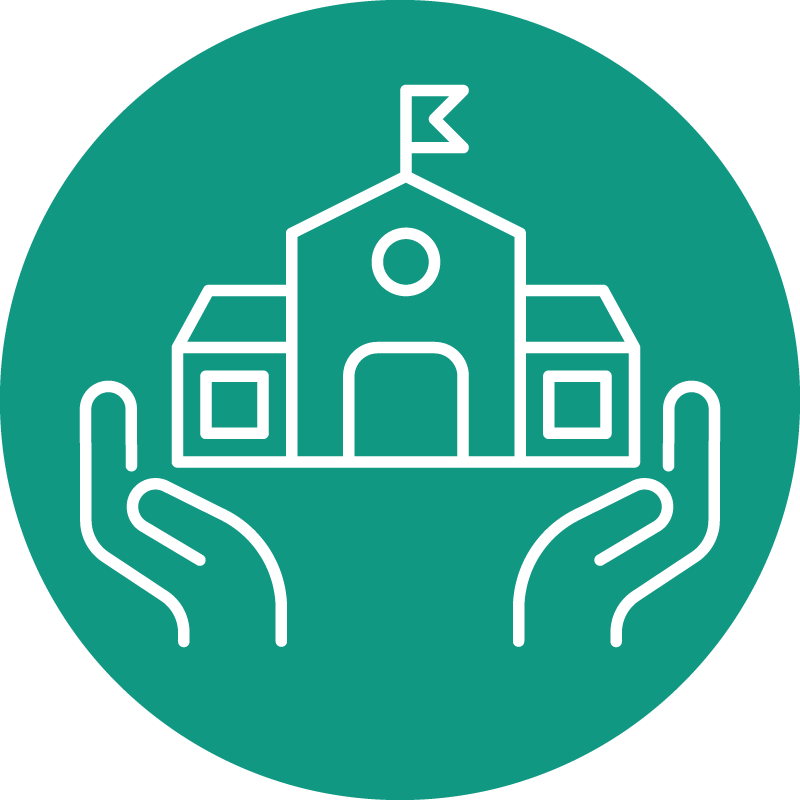
Between the pandemic and the future
Apart from the emotional and social impacts, Peronia Adolescente has seen that school quality and learning have declined among young people after the pandemic interruption. For example, the organization's educators agree that they have encountered young people with more difficulties in reading and writing.
Schools have not resolved how to bridge the gaps the pandemic has widened. Not only due to the educational system offering traditional education that neither realizes nor truly forms youth, whose reality was already concerning before the pandemic.
Likewise, schools have become spaces where coexistence and empathy are foreign. Teachers, either out of indifference or ignorance, don't know what to do with students' emotional problems or how to recover lost education.
Young people in schools don't know how to socialize: many fights, a lot of violence inside and outside educational centers. And bullying, violence, transfer to social networks. Teachers know it, evidence it, but don't know how to handle it. Some kids came with psychological care letters, but parents don't pay attention or follow up. Teachers didn't have strategies for distance education and still don't. Kids show it, and those not in Peronia Adolescente request tutoring.
As the director concluded during the pandemic, precisely the tutoring has been vital to keeping young people's education afloat. Thanks to their personalized approach, Peronia Adolescente educators are alongside the youth, reinforcing subjects and reading skills.
The pandemic represented valuable lessons for Peronia Adolescente. Thus, they have resolved to strengthen personalized tutoring and implement projects of alternative and outdoor spaces where youth can reclaim and re-experience the world they were secluded from. Continuing psychological support, which has been in high demand, is also essential.
At Peronia Adolescente, they have considered strengthening institutionally as they had to cut part of the team due to the pandemic. Therefore, they have begun a process of organizational learning: accounting, information systematization, and database creation. They believe in the importance of creating an orderly and effective structure.
Gone are the days of inexperience when the director took the reins of Peronia Adolescente. Despite more than 20 years of violence and inequality in a city unjust to its youth, the organization is clear about its commitment: building a future where adolescence fits.
Notes
General notes
This product was designed, visualized and written by the Population Council Guatemala team, with collaboration and feedback from the Peronia Adolescente team, for the project Recovering Education in Central America: Activating Networks and Associated Groups (RECARGA).
The images presented were taken from Peronia Adolescente's social networks, shared by her team or photographed by the Population Council Guatemala team. In external cases, the source was indicated.
Specific notes
1. Ecumenical Christian Formation Services in Central America is a Catholic organization founded in 1992.
2. On October 3, 2023, the Population Council team held a participatory workshop, lasting six hours, in Peronia Adolescente. Eleven people participated:
► Four from the Peronia Adolescente team. The director, the psychologist and two young educators.
► Seven young people who participate in the Peronia Adolescente tutorials and projects.
The objectives of the workshop were, through a guided group discussion and timeline, a) to collect the local history of Peronia, b) to document the organizational and educational development of Peronia Adolescente, especially during and after the pandemic, and c) to understand the educational ecosystem in which the partner is located.
One of the products was this case study in the form of a narrative history, prepared after a process of systematization of the workshop, bibliographic review, statistics, audiovisual archive and interview. The shorthand was a collaboration between the Population Council and Peronia Adolescente.
3. The Guatemalan Institute of Radio Education (IGER) is a private-public program, founded in 1979. Its approach has distance methodologies, especially recognized for its classes transmitted by radio. For more information visit the IGER website.
4. In Peronia, the proposal to make it a municipality has been discussed, becoming independent due to the negative management and relationship with the municipality of Villa Nueva. See Sas (2014) in Bibliography.
Bibliography
Cruz Hernández, Y. G. (2014). Fortalecimiento de las capacidades de incidencia de la organización ciudadana de Ciudad Peronia del municipio de Villa Nueva, para la aplicación de la Ley de Vivienda [Licenciatura, Universidad Rafael Landívar]. http://biblio3.url.edu.gt/Tesario/2014/04/06/Cruz-Yoise.pdf
Flores, P. (2022). Ciudad de damnificados: Al borde del abismo. Plaza Pública. https://www.plazapublica.com.gt/content/ciudad-de-damnificados-al-borde-del-abismo
Gellert, G. (1994). Ciudad de Guatemala: Factores en su desarrollo urbano (1775 hasta la actualidad). Mesoamérica, 27, 1–68.
González-Izás, M. (2017). El fenómeno de la violencia urbana. Editorial de Ciencias Sociales.
Instituto Nacional de Estadística Guatemala. (2018). XII Censo Nacional de Población y VII de Vivienda.
______________. (2019). Resultados Censo del 2018.
López Palacios de Sánchez, C. Y. (2004). Historia del municipio de Villa Nueva [Maestría, Universidad San Carlos de Guatemala]. http://biblioteca.usac.edu.gt/tesis/07/07_1435.pdf
Martínez López, J. F. (2011). Transformaciones urbanas en Guatemala 1950-2002. Reunión de expertos sobre: “Población, territorio y desarrollo sostenible”, 29. https://www.cepal.org/sites/default/files/events/files/florentin_martinez.pdf
Mesa Nacional Para la Prevención de la Violencia. (2013). Oportunidades y Desafíos de Educación para las juventudes de Ciudad Peronia.
Municipalidad de Villa Nueva. (s/f). Monografía de Villa Nueva. Municipalidad de Villa Nueva. https://www.villanueva.gob.gt/monografia-de-villa-nueva-guatemala/
Rivas de Indekeu, M. I. (2001). Equidad de género y autoestima dos aspectos que inciden en la participación comunitaria de líderes y liderezas. Estudio desde una perspectiva de género en torno a la participación comunitaria de líderes y liderezas de Ciudad Peronia y lugares circunvecinos, Municipio de Villa Nueva, Departamento de Guatemala [Licenciatura]. Universidad Rafael Landívar.
Rodríguez, J. (2022). Ciudad Peronia, el barrio popular de Guatemala que luchó por proteger su bosque. elDiarioAR. https://www.eldiarioar.com/sociedad/medio-ambiente/ciudad-peronia-barrio-popular-guatemala-lucho-proteger-bosque_1_9125187.html
Ruiz, C., & Rios, R. (2019). Conociendo mi comunidad Ciudad Peronia y su proceso de elevación de categoría a municipio. Manual dirigido a Estudiantes. Consejo Comunitario de Desarrollo Multisectorial de la comunidad Ciudad Peronia del municipio de Villa Nueva del departamento de Guatemala.
Sáenz Bravo, R. (2013). Cuando la ciudad tiene imagen: Cronología del traslado de la ciudad de Guatemala, 1773-1776. 232–239. https://doi.org/10.5821/siiu.5967
Sas, L. Á. (2014). Peronia busca convertirse en municipio. Prensa Libre. https://www.prensalibre.com/guatemala/municipio-guatemala-peronia-ciudad-0-1102689739/
Secretaría Técnica del Consejo Nacional de Seguridad. Reportes estadísticos mensuales de 2016 a 2021. https://stcns.gob.gt/reportes/
Sistema de Información de Inversión Pública. (2022). Mejoramiento calle 5 avenida entre 25 calle a y 26 calle, Peronia zona 8 Villa Nueva, Guatemala.
Solis Miranda, R. (2017). Peronia Adolescente: Reducir la violencia a ritmo de hip hop. Plaza Pública. https://www.plazapublica.com.gt/content/peronia-adolescente-reducir-la-violencia-ritmo-de-hip-hop
